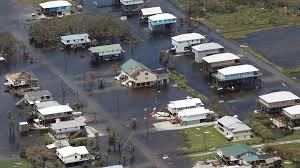From Wildfires to Hurricanes—Parametric Travel Insurance Explained for U.S. Travelers in 2025

1. 🌎 Introduction: A New Era in Travel Protection
In 2025, climate-driven travel disruptions—from California wildfires to Atlantic hurricanes—are pushing U.S. travelers to rethink travel insurance. Traditional policies often fail during fast-moving disasters. Enter parametric travel insurance, a modern solution offering automatic payouts when predefined triggers—like wildfire alerts or hurricane wind speed—are reached. This post explores what parametric coverage means for Americans on the move and how it differs from standard travel insurance.
2. 🔍 What Is Parametric Travel Insurance?
Parametric insurance (also “index-based”) pays out based on objective measurements—such as storm strength, fire alerts, or flight delay durations—rather than proving actual losses. It uses data from satellites, weather stations, and flight databases to trigger payouts. This means fast, transparent compensation, often within days. Unlike traditional policies, there’s no claims paperwork or adjuster assessments, offering reliability when travel goes sideways. weforum.org+6ft.com+6tripnsave.com+6
3. 🛫 Flight Delays & Travel Disruption Triggers
Popular parametric travel plans include trigger payouts for flight delays. For example:
- A flight delay of 2–3+ hours triggers an automatic payout ($100–$300)
- Triggers are verified via airline data—no filing needed
With air traffic control failures and aging systems at major airports, parametric options meet rising demand. Travelers avoid navigating claims—money lands directly into their hands.
4. 🔥 Wildfire Parametric Policies
Wildfire seasons in 2025 are heading toward record levels. Travelers visiting affected regions can benefit from parametric clauses that:
- Pay out when smoke alerts or evacuation orders are issued
- Offer stipends for lodging, food, and alternative travel
These are not paid-out by default—travelers must select wildfire parametric riders to receive financial support when wildfires strike nearby destinations.
5. 🌀 Hurricane Parametric Payouts
Payouts based on measurable hurricane triggers are evolving rapidly:
- Wind speed or storm surge thresholds (e.g., Category 3 winds) trigger a cash payout.
- Funds are received in days—much earlier than traditional insurance claims.
- Covers costs such as preemptive evacuation, hotel stays, or rerouting flights.
According to Swiss Re, hurricane-linked parametric solutions are designed for speed, flexibility, and liquidity. Arbol’s 2024 program paid out $20 million within 30 days after Hurricane Milton, even as traditional insurers lagged. tripnsave.comweforum.org+3corporatesolutions.swissre.com+3arbol.io+3
6. ✅ Traditional vs Parametric Insurance: Quick Comparison
| Feature | Traditional Travel Insurance | Parametric Travel Insurance |
|---|---|---|
| Claim Requirement | Receipts + proof of loss | Trigger meets threshold—no receipts needed |
| Payout Speed | Weeks to months | Days |
| Documentation | Detailed documentation required | Objective data (weather, airline systems) |
| Coverage Scope | Accidents, medical, weather, delays | Specific triggers (weather, wildfires, delays) |
| Payout Options | Full indemnity (within policy limits) | Predetermined fixed amounts |
| Best For | Large financial loss or medical needs | Fast disruption, evacuation, travel hiccups |
7. 📊 Why Parametric Coverage Makes Sense in 2025
- Surge in premium policy demand—such as CFAR and parametric options—amid travel disruptions corporatesolutions.swissre.com+2arbol.io+2reddit.com+2corporatesolutions.swissre.com+6en.wikipedia.org+6marshmclennan.com+6mightytravels.com+4reuters.com+4tripnsave.com+4tripnsave.comtripnsave.com+4ft.com+4weforum.org+4corporatesolutions.swissre.com+1arbol.io+1cnbc.com+3mightytravels.com+3marketwatch.com+3
- Rapid technology adoption: reputed insurers (Mapfre, Swiss Re, Generali) and platforms (Marriott’s rentals, Sensible Weather, Squaremouth) offer parametric solutions ft.com+4reuters.com+4arbol.io+4
- Climate volatility: extreme wildfires, hurricanes, and infrastructure breakdowns are on the rise
8. 🧩 Real-World Example: U.S. Travelers
- California Wildfire Trigger: A smoke alert within 50 miles of your destination in July 2025 triggers a $500 payout for evacuation and lodging.
- Florida Hurricane Trigger: If a Category 3+ hurricane is declared near your beach resort in August, you receive a lump sum for immediate expenses—no receipts needed.
- Flight Delay Emergency: Stuck at Newark for over 3 hours due to system outages? A $200 parametric payout lands swiftly.
9. 🌐 Things to Consider Before Buying
- Check Policy Triggers: Ensure coverage thresholds match your travel risk.
- Understand Payout Limits: Fixed amounts—may not cover all disruptions.
- Combine with Traditional Coverage: Parametric supplements, not replaces, medical or baggage insurance.
- Watch for Basis Risk: If storm just barely misses threshold, no payout—even if damages occur.
- Buy Early: Hurricane parametric plans often require purchase before storm forecasting begins. marketwatch.com+9nasdaq.com+9tripnsave.com+9reuters.com+3ft.com+3corporatesolutions.swissre.com+3corporatesolutions.swissre.com+1arbol.io+1reuters.com+4arbol.io+4corporatesolutions.swissre.com+4
10. 📝 How to Choose the Right Policy
- Opt for riders that cover wildfires and hurricanes.
- Include flight-delay parametrics for smoother travel.
- Verify data sources for triggers—airline, NOAA, satellite feeds.
- Look for hybrid plans combining traditional and parametric payouts.
- Compare providers like Swiss Re, Arbol, Mapfre, and Marriott for reliability and payout speed.
11. 🌟 Final Thoughts
As climate change drives frequent wildfires, hurricanes, and travel disruptions, parametric travel insurance offers built-in, automatic protection for travelers in 2025. U.S. travelers gain fast payouts, transparency, and peace of mind from defined triggers—whether it’s a wildfire alert or a Category 3 storm.
That said, parametric coverage works best with complementary traditional policies. Always read the terms: check triggers, blackout periods, payout amounts, and purchase requirements. When combined, these policies can ensure travelers are financially prepared—no matter what the 2025 skies bring.
📚 Further Reading & Outbound Links
- Reuters on growing demand and parametric travel insurance corporatesolutions.swissre.com+2reuters.com+2arbol.io+2marketwatch.com
- FT on parametric insurance for climate catastrophe marketwatch.com+2ft.com+2en.wikipedia.org+2
- Swiss Re hurricane parametric solutions corporatesolutions.swissre.com+1marshmclennan.com+1
- Arbol hurricane payouts summary
- World Economic Forum on parametric climate resilience weforum.org
- TripNsave guide on natural disaster travel insurance nasdaq.com+7tripnsave.com+7tripnsave.com+7




